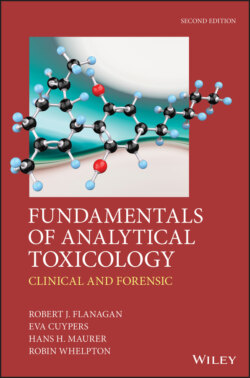Читать книгу Fundamentals of Analytical Toxicology - Robin Whelpton - Страница 17
1.2 Modern analytical toxicology
ОглавлениеRecent years have seen many advances in methods for detecting, identifying, and measuring drugs and other poisons in biological fluids with consequent improvement in the scope and reliability of analytical results. The value of certain emergency assays and their contribution to therapeutic intervention has been clarified. Some such assays are performed for clinical purposes, but have overt medico-legal implications and require a high degree of analytical reliability. Examples include ‘brain death’ and child abuse screening (Flanagan, 2019), and instances of suspected iatrogenic poisoning. In addition, demand for the measurement of plasma drug and sometimes metabolite concentrations to aid treatment (therapeutic drug monitoring, TDM), for substance misuse screening, and for laboratory analyses to monitor occupational exposure to certain chemicals has increased. There has also been increased demand for ‘on-site’ testing, be it either in the clinic, or at the roadside.
Despite analytical advances, it remains impossible to look for all poisons in all samples at the sensitivity required to diagnose poisoning. It is vital therefore that the reason for any analysis is kept clearly in mind. Although the underlying principles remain the same in the different branches of analytical toxicology, the nature and the amount of specimen available can vary widely, as may the time scale over which the result is required and the purpose for which the result is to be used. All these factors may in turn influence the choice of method(s) for a particular analysis. Over the last 10 years the dramatic expansion in the range of compounds that may be misused to achieve intoxication has further complicated the role of the analytical toxicologist (Pasin et al., 2017), as has the use of such unusual substances as 210Po and the nerve agent ‘Novichok’ as murder weapons (Harrison et al., 2017; Vale et al., 2018).
